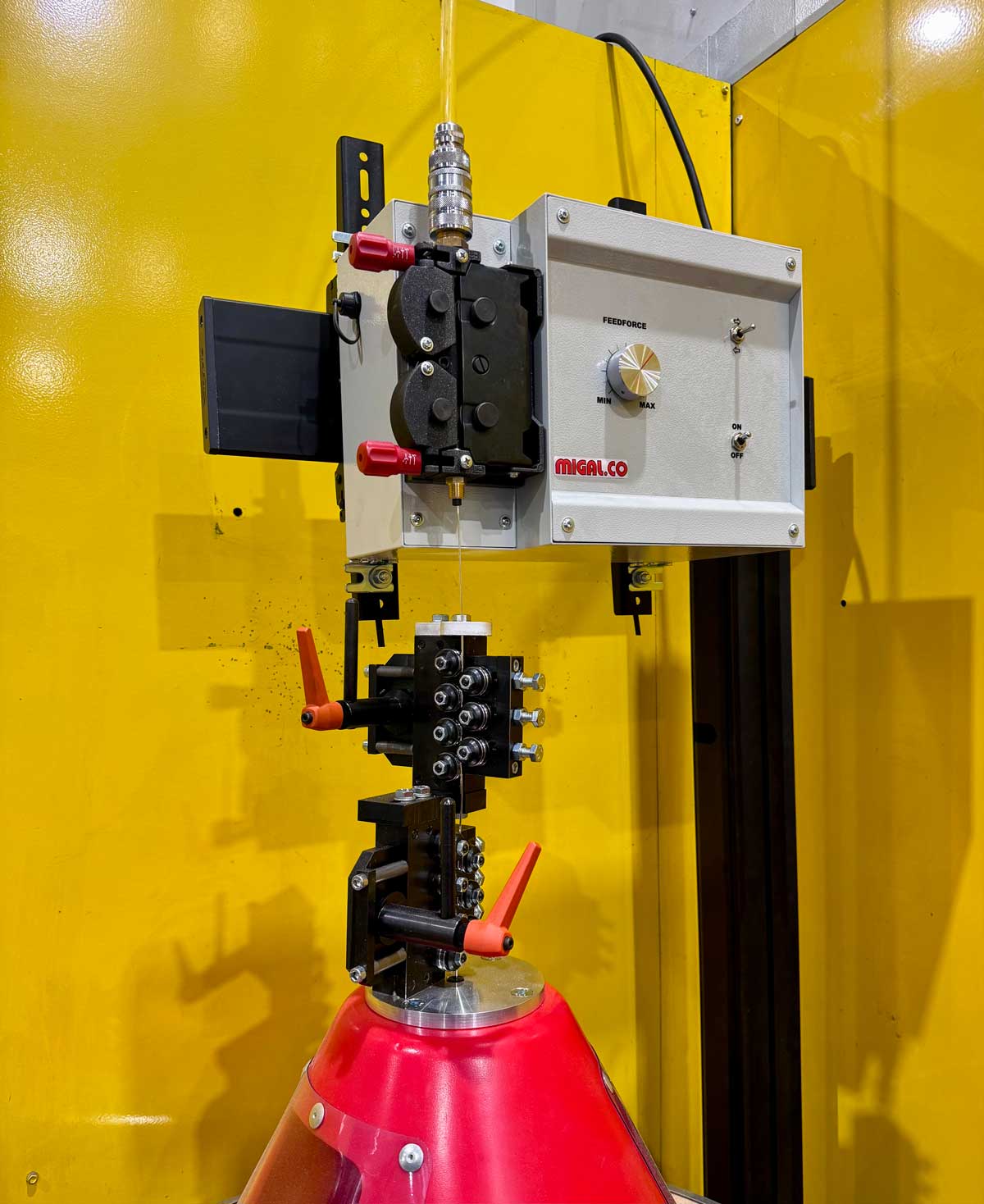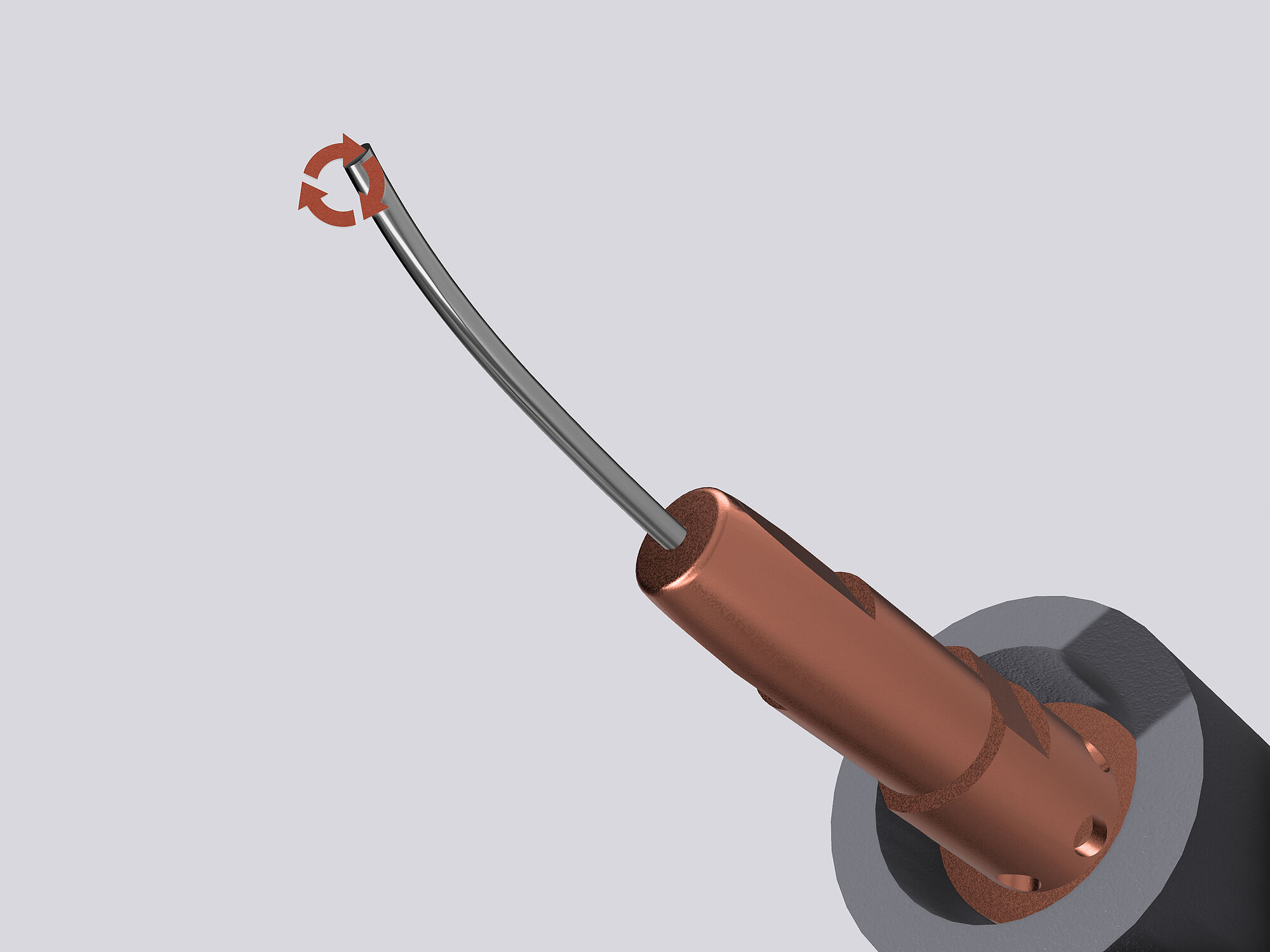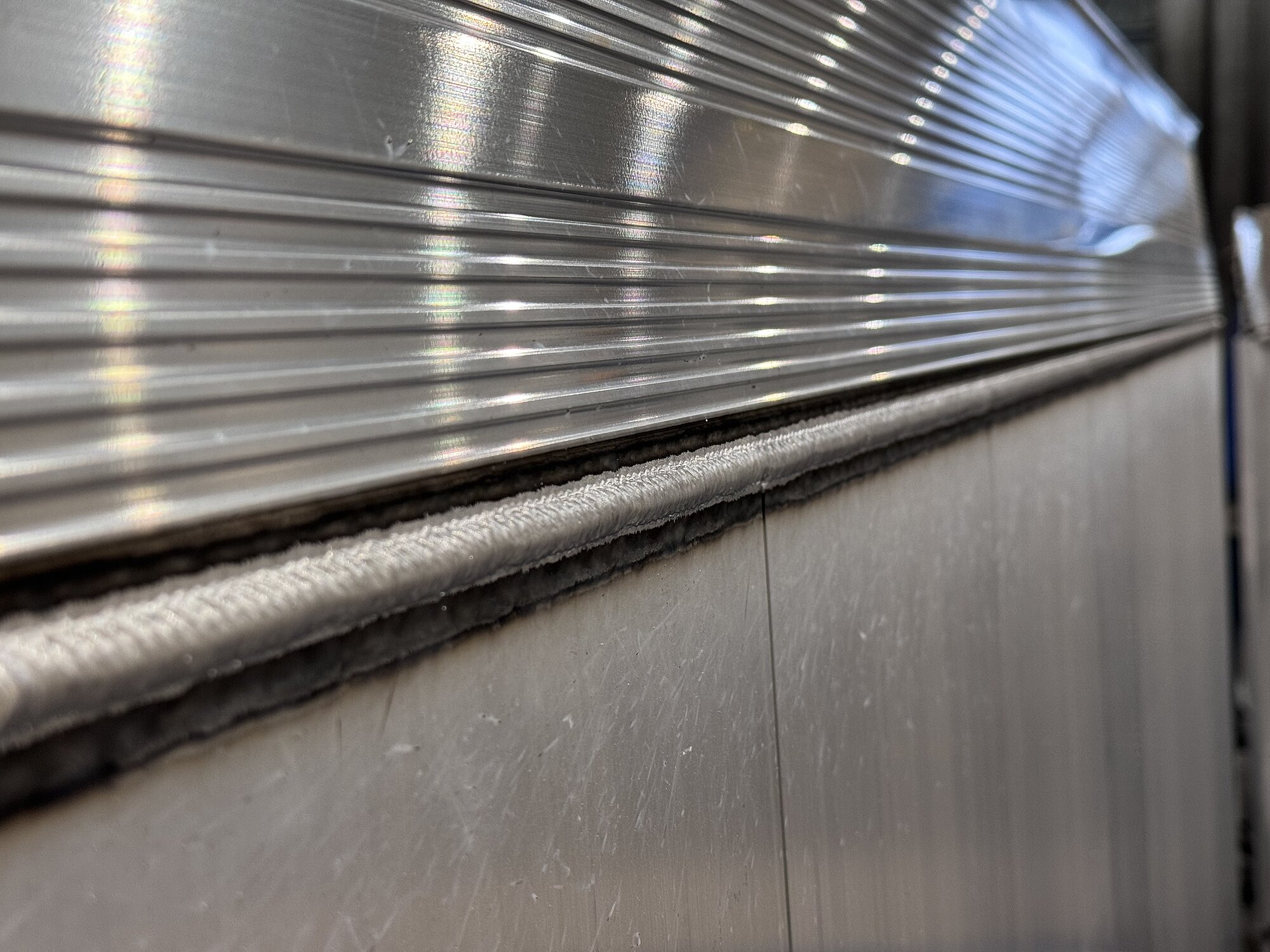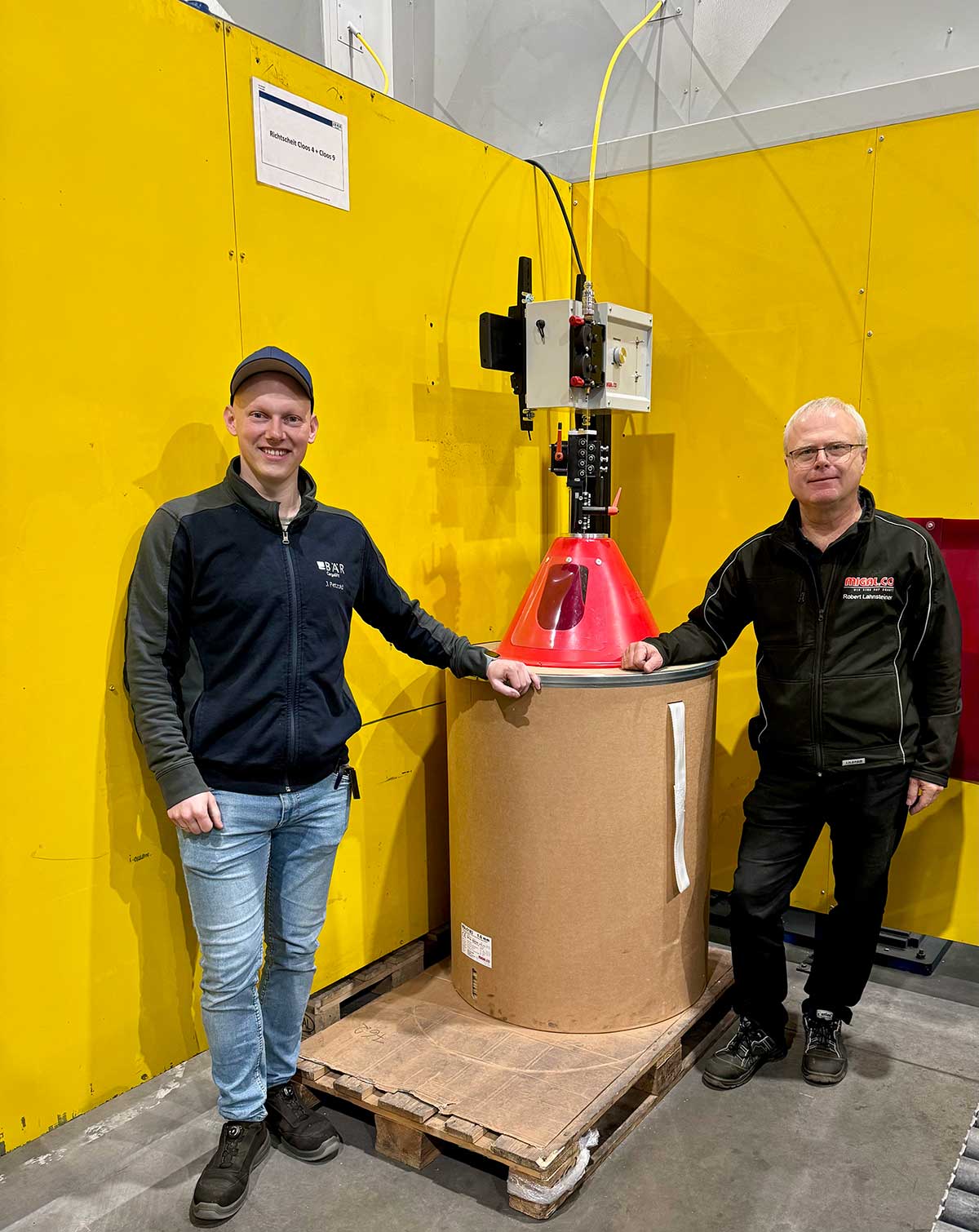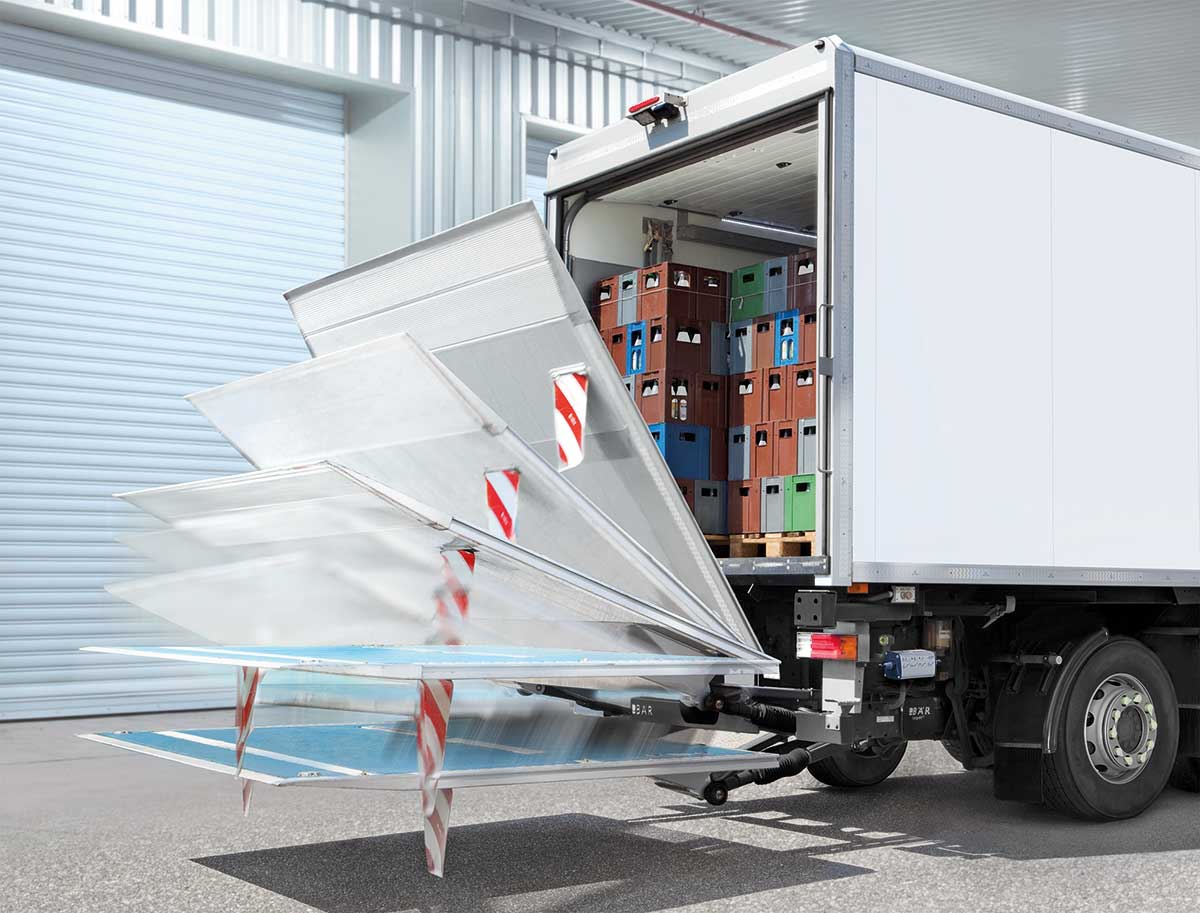"Innovation Meets Sustainability: Bär Cargolift Optimizes Welding Technology in Tail Lift Production with MIGAL.CO“
Bär Cargolift, a leading European manufacturer of hydraulic tail lifts known for quality, reliability, and innovation, with a broad offering for various vehicle types, has developed an improved welding solution in collaboration with MIGAL.CO. This development involves the introduction of JUMBO XL drums, RoboStraight wire straightening devices, RoboFeed wire feeding devices, and Duroliner wire guide hoses, leading to a significant quality enhancement after successful tests. MIGAL.CO's aluminum welding electrodes, featuring an exceptionally low CO2 footprint, contribute to sustainability, while production in Europe and the proximity of the companies ensure a crisis-proof supply chain.
Gerd Bär GmbH, commonly known as Bär Cargolift, is a leading manufacturer of hydraulic tail lifts in Europe. Founded in the 1980s in Heilbronn, Germany, it has evolved into a key player in the transport and logistics industry. Bär Cargolifts are renowned for their quality, reliability, and innovative technology, offering a wide range of tail lifts for various applications and vehicle types, including trucks, trailers, and special vehicles. The product range includes standard tail lifts, underfloor tail lifts, and retractable tail lifts, designed to simplify loading and unloading processes, enhance efficiency, and improve operator safety. Bär Cargolift places a strong emphasis on innovation, regularly developing new solutions to meet the changing needs of customers and the industry. The company is also known for its customer service, encompassing installation, maintenance, repair, and spare parts service. Bär Cargolift has an extensive sales and service network in Europe and beyond to support customers worldwide. In addition to technological leadership, Bär Cargolift also emphasizes the importance of sustainability and environmental protection in its operations and product developments. By improving the energy efficiency of its products and reducing the environmental impact of its production processes, the company aims to make a positive contribution to the environment and society.
At its headquarters in Heilbronn, Germany, where the first BÄR tail lift was designed and manufactured over 40 years ago, BÄR produces tail lifts from aluminum. Aluminum offers several key advantages as a material for manufacturing hydraulic tail lifts, making it a popular choice for these applications:
- Lightweight: Aluminum is significantly lighter than other metals like steel, leading to a substantial reduction in the overall weight of the tail lift. This lighter weight helps to increase the vehicle's payload as less weight needs to be allocated for the tail lift itself. Additionally, the reduced fuel consumption can lead to cost savings and a decrease in CO2 emissions.
- Corrosion Resistance: Aluminum is naturally corrosion-resistant, meaning that aluminum tail lifts last longer and require less maintenance than those made from less resistant materials. This property makes aluminum particularly suitable for use in environments with high humidity levels or where salt (e.g., in coastal areas or on vehicles that travel on salted roads in winter) can accelerate corrosion.
- High Strength at Low Weight: Despite its low weight, aluminum offers high strength, important for the structural integrity and reliability of the tail lift. Modern alloys and processing techniques further improve the mechanical properties of aluminum, allowing it to withstand the stresses of daily use.
- Recyclability: Aluminum is 100% recyclable without losing quality. Using recycled aluminum can significantly reduce energy consumption and environmental impact compared to using newly produced aluminum.
- Good Processing Properties: Aluminum is relatively easy to work with, weld, and shape, facilitating the manufacturing of complex and customized tail lift constructions. This flexibility supports innovative designs and can contribute to the development of tail lifts tailored to users' needs.
In its welding production of tail lifts, Bär utilizes advanced, automated MIG welding with robot welding cells from Cloos. The welding filler used is S Al 5183 (AlMg4.5Mn0.7(A)) with a diameter of 1.6 mm, protected by argon. Previously, the wire electrodes were sourced on B-400 spools weighing 40 kg and placed a short distance from the wire feeding device in the welding cell to minimize the length of the wire feed.
However, this configuration had several disadvantages. A significant issue is the so-called cast of the aluminum wire, which describes the diameter of a free wire loop after being removed from the spool. Cast results from plastic deformation due to the relatively small diameter of the spools and the phenomenon of stress relaxation. Plastic deformation leads to internal stresses in the aluminum, which the material seeks to minimize over time to reach an energetically preferred state. This stress relaxation adjusts the material's microstructure, causing additional permanent deformation of the wire. Over time and with the progressive consumption of the spool, the cast reduces, leading to subsequent problems. The resulting curvature of the wire electrode causes a circling motion upon exiting the contact nozzle of the MIG welding torch and occasionally an abrupt flipping. These effects are particularly problematic for creating long, straight, and visible weld seams, as needed for tail lifts. Additionally, handling the heavy, 40 kg spools at some height posed a challenge, along with reports of wire abrasion and the need for rework.
During the "Welding & Cutting 2023" trade fair, an initial contact between Bär and MIGAL.CO led to a collaborative search for innovative solutions to these welding challenges. The successful cooperation culminated in the implementation of an effective solution, comprising the JUMBO XL pay-off pack or drum with a net weight of 240 kg, the RoboStraight wire straightening device, the RoboFeed wire feeding device, and the Duroliner wire guide hose. Although aluminum welding wire delivered in drums has a larger springback than smaller spools, it is not entirely free from this characteristic. However, integrating the RoboStraight wire straightening device, equipped with 14 rollers on two levels, allows for a sufficiently straight electrode. The RoboFeed feeding device provides the mechanical force needed both to straighten the wire and to transport it through the up to 20-meter-long conduit, with an adjustable and speed-independent conveying force. Notably, no electrical connection to the robot control is required.
Another component is the use of MIGAL.CO's DUROLINER, a significantly improved PE conduit. It is characterized by its high hardness and a low coefficient of sliding friction, without losing break resistance – even with frequent bending. At Bär, the outfitting of a total of four welding stations was under consideration, leading to a decision to thoroughly test the proposed solution before making a final investment decision. Jan Petzold, responsible for welding technology at Bär, along with Robert Lahnsteiner from MIGAL.CO, undertook the installation of the first station. After this setup led to the desired results without any complaints over several weeks, a total of four units were purchased and commissioned. The achieved results were impressive: Perfect, straight weld seams, no abrasion in the wire feeding system, trouble-free operation, and a significant reduction in rework convinced the technical staff at Bär. A significant additional advantage results from the lower setup times of the 240 kg drums compared to the 40 kg spools, as well as eliminating the need to handle spools at several meters' height within the robot cell.
MIGAL.CO's aluminum welding electrodes are characterized by a remarkably low CO2 footprint, with less than 4 kg CO2 per kg of aluminum, only 25% of the industry average value for aluminum. The production of these high-quality products within Europe, combined with the geographical proximity of the involved companies, ensures a reliable and crisis-proof supply chain.






